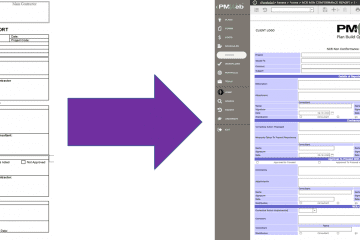The Project Management Institute (PMI) Project Management Body of Knowledge (PMBOK®) defines cost estimate as the process of developing an approximation of the monetary resources needed to complete project activities. The key benefit of this process is that it determines the amount of cost required to complete project work.
Cost estimates are a prediction that is based on the information known at a given point in time. They include the identification and consideration of cost alternatives to initiate and complete the project. Costs are estimated for all resources that will be charged to the project. This includes but is not limited to labor, materials, equipment, services, and facilities, as well as special categories such as an inflation allowance, cost of financing, or contingency costs.
The accuracy of a project estimate will increase as the project progresses through the project life cycle. For example, a project in the initiation phase may have a rough order of magnitude (ROM) estimate in the range of −25% to +75%. Later in the project, as more information is known, definitive estimates could narrow the range of accuracy to -5% to +10%.
Capital project owners, who would usually depend on the engineering design, cost management, or quantity surveying consultant to prepare the project’s cost estimate during the design phase, need to have a formal process to ensure that the delivered cost estimate is complete, comprehensive, and valid. One of the best practices to achieve this requirement is to have a detailed cost estimate checklist that needs to be completed at the end of each cost estimate submission. The content of the checklist should be based on proven best practices as well as the project owner’s past experiences and knowledge in delivering capital projects.
Using a Project Management Information System (PMIS) like PMWeb, cost estimate checklists can be created using PMWeb visual form builder. Although, there is the option of creating a different cost estimate checklist for each phase or have a common checklist for all phases. The checklist will usually define the organization that prepared the cost estimate, estimate type as well as the list of items to be checked and verified for the cost estimate being reviewed and approved. For each item to be checked, the response will be either “Yes” or “No” along with comments to explain the action taken, especially if the response was “No”. The form will also include the action taken on the estimate as being either “Approved” or “Not Approved”. Additional fields can be added if needed.

It is important that the estimate being reviewed is linked to the Cost Estimate Checklist. To achieve this, PMWeb Estimating module will be used to capture the details of the cost estimates prepared by the engineering design, cost management, or quantity surveying consultant. Although the cost estimate can be created directly in PMWeb, nevertheless, most of those consultants prefer to create the cost estimate using their own applications. Their developed cost estimate will then get exported to MS Excel to enable importing it into PMWeb Estimating module. The import command allows mapping the field names provided by the consultant into the relevant fields in PMWeb. The imported cost estimate will also have all supportive documents, such as drawings and specifications, attached to the cost estimate to ensure that the estimate can be audited and verified.

Having the cost estimate available in PMWeb is crucial as when its formally reviewed and approved, it will become the basis for generating the project baseline budget, budget adjustments, online bid packages and awarded commitments. This will ensure single version of the truth when it comes to managing, monitoring, evaluating and reporting the project’s cost.

PMWeb Workflow module will be used to create the review and approval workflow for both, the Cost Estimate Checklist and the imported Cost Estimate. The review and approval process tasks will be in accordance with the sequence established in the cost estimate section of the project management manual. The workflow could also include conditions to map the approval authority levels if needed which could be related to the project phase and/or the cost estimate value.




